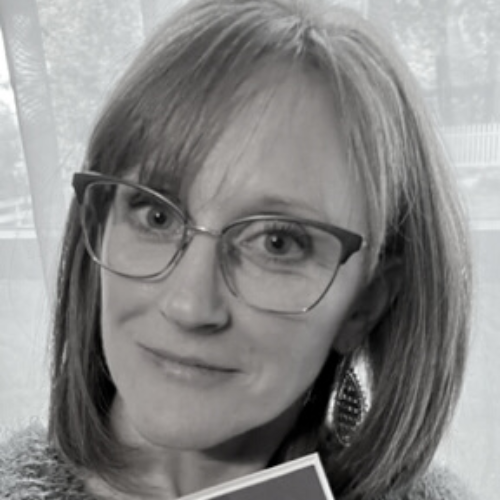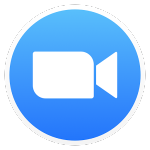Foundational Math VI
Placement Information
Placement Process
One critical factor for restful learning is the proper placement of students. If you are unsure which level is the best fit for your student, reach out to the instructor you are considering. Once registered, anticipate contact regarding placement evaluations from instructors by May 15th and throughout the summer. Students must be registered to enter the placement process. Early placement exams may allow time for tutoring or additional review based on the outcomes. See more about placement evaluations in our Student-Parent Handbook.
Math Placement Process
For registered students, please anticipate contact regarding placement evaluations from instructors by May 15th and throughout the summer. Students must be registered in a math course to receive a placement assessment. Math classes have a detailed and specific placement process.
Read more about the math placement process here.
Watch the math placement process video with our department chair, Dr. Fransell Riley, here.
See the Math Scope and Sequence here.
Required Materials:
Books and supplies are not included in the purchase of the course.
- Required Textbook: REVEAL Math Course 1 Student Bundle (Digital Subscription, Volume 1 and Volume 2 printed books)
- Required texts are not included in the purchase of the course.
- Personal Size Dry-erase Board with Markers
- Three-ring Binder
- Loose-leaf Filler Notebook Paper
- Loose-leaf Filler Graph Paper
- 5 Divider Tabs
- Sharpened Pencils, Highlighter, Basic Set Colored Pencils/Crayons
- Ruler with Customary and Metric Markings
- Protractor
Additional materials and/or manipulatives may be requested by the instructor prior to a particular class session

Joelle Riethmiller believes true education impacts the body, mind, and soul of an individual through all subject areas and promotes personal and virtuous growth through life-long learning. Mrs. Riethmiller received a BS in Mathematics-Mathematics Secondary Education from Grove City College (1999). While teaching seventh and eighth grade mathematics in public school, she earned a M-ED in Curriculum and Instruction from Gannon University (2002). Mrs. Riethmiller chose to step away from the classroom in 2003 to focus her attention on her young and growing family. In 2007, she embarked on the home education journey with two of her three children. Continuing that journey, she is still experiencing the humbling beauty and depth of true and real life-long learning. She believes her 20 years of sacramental marriage, parenting and home educating her now four children, and her personal faith journey have cultivated a desire to seek truth, beauty, and goodness in all aspects of life.
Mrs. Riethmiller strives to ignite a love for learning and desire for virtue in her students that ex-tends beyond the study of mathematics. She is thrilled to participate in the Scholè Academy mission to cultivate student learning that endures. [email protected]
Quarter 1
- Understand, Compare, and Order Integers
- Absolute Value and Distance
- Multiply and Divide Multi-Digit Whole Numbers
- Divide by Fractions and Mixed Numbers
- The order in which topics are presented may vary according to instructor and course section.
Quarter 2
- Understanding Ratios, Equivalent Ratios, and Ratio Problems
- Understanding Rates and Unit Rates
- Understanding Percents, Percents > 100% and < 1%
- Relate Percents, Decimals, and Fractions
- Find the Percent of a Number
- The order in which topics are presented may vary according to instructor and course section.
Quarter 3
- The Coordinate Plane and Reflection of a Point
- Writing, Interpreting, and Evaluating Numerical Expressions
- Identify and Write Equivalent Expressions
- Solve One-Step Equations
- Understand Inequalities (meaning, context, on a number line)
- Explore Relationships Between Two Variables
- The order in which topics are presented may vary according to instructor and course section.
Quarter 4
- Graphical Displays incl. Dot and Box Plots and Histograms
- Measures of Central Tendency: mean, median, mode
- Interquartile Range
- Area of Parallelograms, Triangles, Trapezoids, and Polygons
- Surface Area of Prisms and Pyramids
- The order in which topics are presented may vary according to instructor and course section.
![]() Computer: You will
need a stable, reliable computer, running with a processor with a speed of 1 GHz or better
on one of the following operating systems: Mac OS X with Mac OS 10.7 or later; Windows 8,
7, Vista (with SP1 or later), or XP (with SP3 or later). We do not recommend using an
iPad or other tablet for joining classes. An inexpensive laptop or netbook would be much
better solutions, as they enable you to plug an Ethernet cable directly into your computer.
Please note that Chromebooks are allowed but not preferred, as they do not support certain
features of the Zoom video conference software such as breakout sessions and annotation,
which may be used by our teachers for class activities.
Computer: You will
need a stable, reliable computer, running with a processor with a speed of 1 GHz or better
on one of the following operating systems: Mac OS X with Mac OS 10.7 or later; Windows 8,
7, Vista (with SP1 or later), or XP (with SP3 or later). We do not recommend using an
iPad or other tablet for joining classes. An inexpensive laptop or netbook would be much
better solutions, as they enable you to plug an Ethernet cable directly into your computer.
Please note that Chromebooks are allowed but not preferred, as they do not support certain
features of the Zoom video conference software such as breakout sessions and annotation,
which may be used by our teachers for class activities.
![]() High-Speed Internet Connection:
You will also need access to high-speed Internet, preferably accessible via Ethernet
cable right into your computer. Using Wi-Fi may work, but will not guarantee you the optimal
use of your bandwidth. The faster your Internet, the better. We recommend using a connection
with a download/upload speed of 5/1 Mbps or better. You can test your Internet connection here.
High-Speed Internet Connection:
You will also need access to high-speed Internet, preferably accessible via Ethernet
cable right into your computer. Using Wi-Fi may work, but will not guarantee you the optimal
use of your bandwidth. The faster your Internet, the better. We recommend using a connection
with a download/upload speed of 5/1 Mbps or better. You can test your Internet connection here.
![]() Webcam: You may
use an external webcam or one that is built in to the computer. Webcam Recommendations:
Good (PC only) | Best (Mac and PC)
Webcam: You may
use an external webcam or one that is built in to the computer. Webcam Recommendations:
Good (PC only) | Best (Mac and PC)
![]() Headset: We recommend
using a headset rather than a built-in microphone and speakers. Using a headset reduces the
level of background noise heard by the entire class. Headset Recommendations: USB | 3.5mm
Headset: We recommend
using a headset rather than a built-in microphone and speakers. Using a headset reduces the
level of background noise heard by the entire class. Headset Recommendations: USB | 3.5mm
![]() Zoom: We use a web
conferencing software called Zoom for our classes, which enables students and teachers to
gather from around the globe face to face in real time. Zoom is free to download and easy
to use.
Zoom: We use a web
conferencing software called Zoom for our classes, which enables students and teachers to
gather from around the globe face to face in real time. Zoom is free to download and easy
to use.  To
download Zoom:
To
download Zoom:
- Visit zoom.us/download.
- Click to download the first option listed, Zoom Client for Meetings.
- Open and run the installer on your computer.
- In August, students will be provided with instructions and a link for joining their particular class.
![]() Scanner: In this
class, students frequently submit homework assignments by scanning pages from their workbooks.
Students and/or their parents should have easy access to a scanner and the ability to use it.
Scanner: In this
class, students frequently submit homework assignments by scanning pages from their workbooks.
Students and/or their parents should have easy access to a scanner and the ability to use it.
Step 1
Step 2
Step 3
Step 4
Explore our courses!
First, read the available course descriptions, noting prerequisites, target grades, and course objectives. If you think your student is prepared for the course, go ahead and register. After registration, a placement assessment may be provided to students, depending on the course and the student’s previous enrollment with Scholé Academy. Registration is finalized when the student’s placement assessment has been returned by the course instructor with placement confirmation.
All Courses | By Subject | By Grade
Read the Student-Parent Handbook.
Please take careful note of our teaching philosophy, our technology requirements, our school policies, the parent agreement, and the distinctions between our grade levels.
Double-check the course section dates and times.
Make sure they don't conflict with other activities in your schedule or other courses you are purchasing. Our system will not catch double-bookings!
You're ready to add course selections to your cart!
Our Assistant to the Principal will be in touch with you after your enrollment to help you with next steps, including any placement evaluations that may be required for your course selections.
This registration will be finalized when the student's placement assessment has been returned by the course instructor with placement confirmation.
